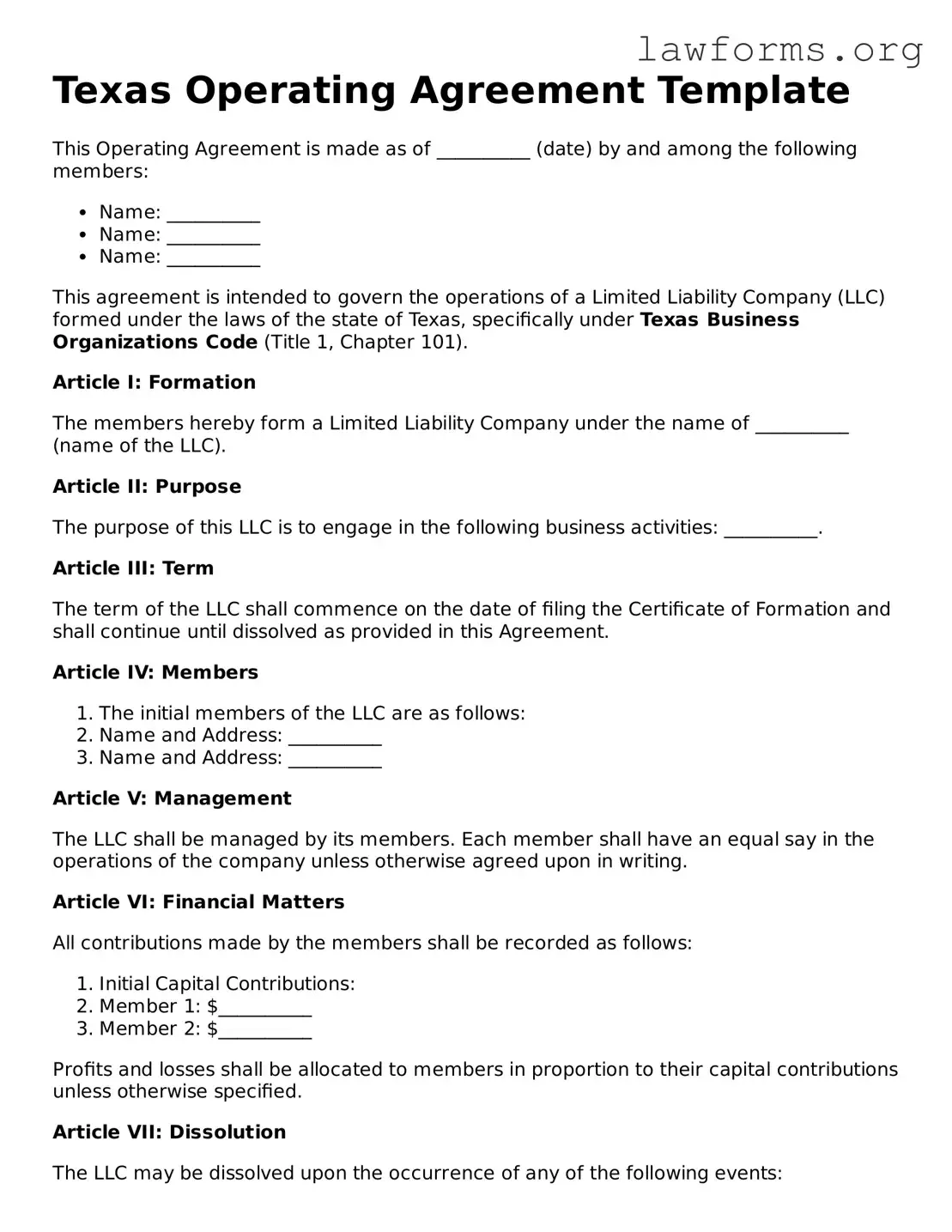Texas Operating Agreement Template
This Operating Agreement is made as of __________ (date) by and among the following members:
- Name: __________
- Name: __________
- Name: __________
This agreement is intended to govern the operations of a Limited Liability Company (LLC) formed under the laws of the state of Texas, specifically under Texas Business Organizations Code (Title 1, Chapter 101).
Article I: Formation
The members hereby form a Limited Liability Company under the name of __________ (name of the LLC).
Article II: Purpose
The purpose of this LLC is to engage in the following business activities: __________.
Article III: Term
The term of the LLC shall commence on the date of filing the Certificate of Formation and shall continue until dissolved as provided in this Agreement.
Article IV: Members
- The initial members of the LLC are as follows:
- Name and Address: __________
- Name and Address: __________
Article V: Management
The LLC shall be managed by its members. Each member shall have an equal say in the operations of the company unless otherwise agreed upon in writing.
Article VI: Financial Matters
All contributions made by the members shall be recorded as follows:
- Initial Capital Contributions:
- Member 1: $__________
- Member 2: $__________
Profits and losses shall be allocated to members in proportion to their capital contributions unless otherwise specified.
Article VII: Dissolution
The LLC may be dissolved upon the occurrence of any of the following events:
- By the unanimous agreement of the members.
- Upon the death, resignation, or expulsion of a member.
Article VIII: Amendments
This Agreement may be amended only by a written agreement signed by all members.
IN WITNESS WHEREOF, the members have executed this Operating Agreement as of the date first above written.
Signature: ____________________ Date: __________
Signature: ____________________ Date: __________
